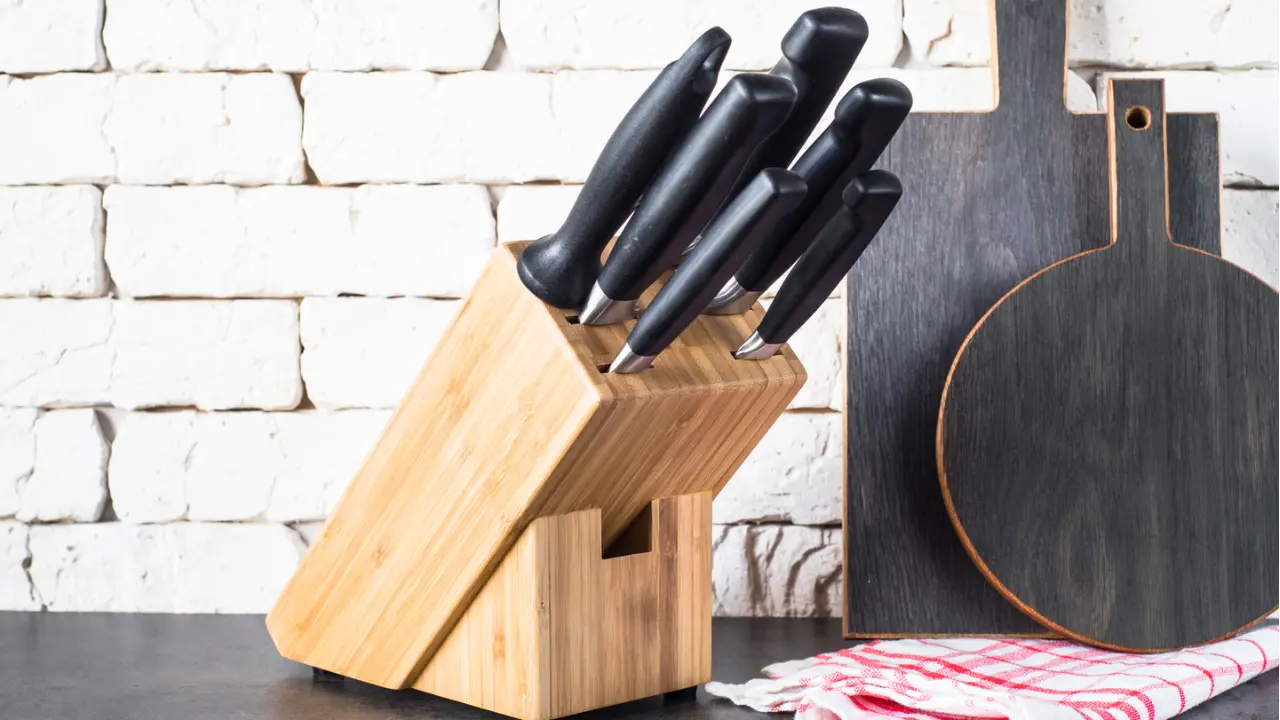Do you have a knife block on your kitchen counter? If so, you might be surprised to learn that it could be hiding something nasty. Mold, bacteria, and debris in a knife block can contaminate your knives and food. Do not worry, you do not have to get rid of your knife block. You can clean and sanitize it with some simple steps and supplies. In this article, we will explain Why You Should Clean Your Knife Block ASAP—Plus How to Do It as soon as possible. We will also give you some pointers. On how to keep your knife block clean and your knives in good condition.
The Risks of a Dirty Knife Block
A knife block is a convenient way to store and organize your knives, but it can also create a moist, dark environment conducive to mold and bacteria growth. If you do not thoroughly clean and dry your knives before reinstalling them in the block, you risk introducing moisture, food particles, and germs into the slots. These can build up over time and form a sticky or fuzzy layer, compromising the quality and safety of your knives.
A dirty knife block may pose the following risks:
- Mold exposure can cause allergic reactions, respiratory problems, and infections in some people, particularly those with asthma or compromised immune systems. Mold can also damage your knives by causing rust or corrosion.
- Bacterial contamination can result in food poisoning, diarrhea, vomiting, and fever caused by bacteria such as E. coli, salmonella, and staphylococcus. Bacteria can spread from your knives to your food, increasing the risk of cross-contamination.
- Debris accumulation: Debris such as dust, crumbs, and insects can clog your knife block’s slots, making it difficult to insert or remove your knives. Pests like ants and cockroaches can be attracted to debris.
How to Clean Your Knife Block
To avoid these risks, clean your knife block at least once a month, or more frequently if you use your knives frequently. A pipe cleaner or small bottle brush, a scrubby sponge or brush, dish soap, dish cloths, a scraper, bleach or vinegar are all necessary tools and supplies.
Here are the steps to cleaning your knife block:
Step 1: Remove the Knives
Take all of the knives out of the block and wash them in hot, soapy water. Using a clean cloth or paper towel, completely dry them.
Step 2: Clean the Slots
Shake out any crumbs or debris by turning the block upside down over a trash can. Reach into the slots with a pipe cleaner or a small bottle brush to remove any remaining dirt. To capture the grime, you may need to twist or swirl the tool around.
Step 3: Clean the Outside
Scrub the outside of the block gently with a scrubby sponge or brush, soap, and water. Do not forget to clean the underside and corners, which can accumulate grease or sticky spots.
Step 4: Rinse and Dry
Rinse the block thoroughly with warm water, making sure to get any soap residue out of the slots and around the edges. To remove excess water, wipe it down with a clean, dry cloth. Place it upside down on a clean towel and let it air dry for several hours.
Step 5: Sanitize the Block
In a large container, combine one tablespoon of bleach and one gallon of water. Instead of bleach, you can use undiluted vinegar or hydrogen peroxide. With a cloth, wipe the solution around the outside of the block. Then, pour the solution into the slots until they are completely filled.
Step 6: Let It Sit
Allow one minute for the solution to sit on the block to kill any mold or bacteria. You can leave it for a longer period of time if you want. But do not let it dry on the block.
Step 7: Rinse and Dry Again
Rinse the block with warm water once more, making sure to remove any bleach residue from the slots and the outside. Wipe it down with a clean, dry cloth once more to remove any remaining water. Allow it to air dry completely by placing it upside down on a clean towel. Wait until the slots are dry before reinstalling the knives.
How to Maintain a Clean Knife Block
Follow these simple maintenance tips to keep your knife block clean and safe:
- Always thoroughly wash and dry your knives before re-storing them in the block. If you leave them wet or dirty, mold and bacteria will grow.
- Keep your knife block cool and dry, away from direct sunlight and heat sources. Avoid placing it near the sink or the stove, where it can get wet or greasy.
- Examine your knife block on a regular basis for signs of mold or debris. If you notice any, clean it right away.
- If your knife block is damaged or worn out, replace it. Cracks and holes can trap more dirt and germs, making cleaning more difficult.
A knife block is a useful tool for storing and organizing your knives, but if not cleaned properly, it can pose some health risks. You can keep your knife block clean and sanitary by following these steps and tips, and your knives will be ready to use whenever you need them.
Conclusion
Finally, while a knife block can be a useful and convenient way to store your knives, it can also be a breeding ground for mold, bacteria, and debris. You should clean your knife block on a regular basis with soap, water, and bleach or vinegar to keep it clean and safe. You should also thoroughly wash and dry your knives before re-storing them in the block, and keep the block in a cool, dry place. You can enjoy your knife block and knives for a long time if you follow these steps and tips.

